Understanding Pest Droppings| Identification and Risks
Droppings from pests can cause serious problems for both businesses and homeowners in Sydney. Finding pest droppings can be essential for identifying the species of bug and figuring out how bad the infestation is. Each pest, from rodents like mice and rats to insects like bed bugs and cockroaches, leaves behind distinctive droppings that might serve as a sign of their existence. Additionally, human and animal health may be in danger if insect droppings are not properly identified and disposed of. We’ll look at the typical varieties of bug droppings, their traits, and any potential dangers in this tutorial. We Provide tailored Pest Control Solutions for Every Sydney Home and Office, Call 1300 119 085 Today!
Mice Droppings

Mice droppings, typically tiny, exhibit a pellet-like shape. Measuring about 0.3 to 0.8 centimeters in length, they possess pointed ends and a somewhat cylindrical form. Their texture is typically firm, yet crumbly when dry. A dark brown hue characterizes fresh droppings, which gradually lighten as they age. Beware, though! Mice droppings may harbor diseases.
Roof Rat Dropping
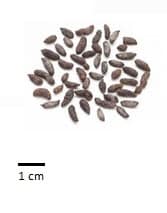
Roof rat droppings, somewhat larger than those of mice, exhibit a spindle-shaped or capsule-like appearance. Averaging around 1.2 to 1.5 centimeters in length, these droppings taper at both ends, curving slightly. Fresh droppings possess a shiny, moist exterior and a deep, almost black color. As they age, they dry out, their texture becoming crumbly, and their hue fading to a duller brownish-gray. Take caution: roof rat droppings may carry harmful pathogens.
Norway Rat Dropping
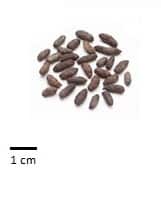
Norway rat droppings distinguish themselves as sizable, capsule-shaped pellets. Ranging between 1.8 to 2 centimeters in length, their blunt ends and rounded bodies typify their appearance. New droppings display a deep brown color, a moist, soft texture; however, they progressively dry out, becoming crumbly and lighter in hue, tending towards a dull brown. Be mindful: these droppings potentially harbor disease-causing agents, so handle them with care.
8
REASON TO CHOOSE SAFE PEST CONTROL
- Guarantee protection all year-round
- 30 Years Collective Experience
- An impeccable reputation across Sydney's Suburbs
- Certified treatments & written Warranty On all work carried out
- Family Owned & Operated
- Rated #1 Pest Control Sydney
- No Mess, No Smell
- Family & Pet Friendly Treatments

100 +
Reviews

REQUEST A QUOTE
German Cockroach Droppings
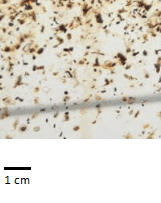
German cockroach droppings, minuscule in size, resemble specks of ground pepper or coffee grounds. These droppings, measuring less than 1 millimeter, are often scattered in clusters near their habitats. Their texture is granular and dry, while the color varies from dark brown to black. Due to their small size and resemblance to common household substances, they can be challenging to identify. Be vigilant, as these droppings may contribute to the spread of harmful bacteria.
American Cockroach Droppings
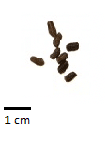
American cockroach droppings, though small, are discernible with their cylindrical shape and ridges along the length. These droppings measure approximately 0.4 to 0.8 centimeters and often exhibit slightly rounded ends. Fresh droppings are dark brown to black in color and have a moist, slightly shiny appearance. Over time, they dry out, adopting a more matte finish and a firm texture. Be cautious, as these droppings can harbor bacteria, exacerbating allergies and potentially causing illness.
Lizard Dropping

Lizard droppings, small yet distinctive, manifest as elongated, spindle-shaped pellets. Depending on the lizard species, they range from 0.5 to 1.5 centimeters in length. A notable feature is the presence of a whitish, chalky substance called urates, typically found at one end of the dropping. Fresh droppings exhibit a dark brown or black color and a moist texture, while older ones turn dry and crumbly, their hue fading over time. Though less concerning than other pests‘ droppings, maintaining cleanliness is still advisable.
Bed Bug Droppings
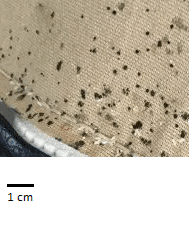
Bed bug droppings, often appear as small, dark spots or smears. Measuring less than 1 millimeter in size, these droppings can be easily overlooked. The texture is either slightly raised, like a tiny bump, or smeared, depending on the surface. Exhibiting a dark brown or black color, these droppings are actually partially digested blood, excreted by the bed bugs after feeding. Be watchful, as the presence of these droppings signifies a bed bug infestation requiring immediate attention.
Ant Droppings
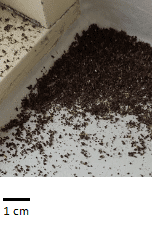
Ant droppings, also known as frass, are minuscule and granular, often resembling sawdust or sand. The size of these droppings is minute, measuring less than 1 millimeter. Their shape is irregular and varies depending on the ant species and the materials they consume. The texture is typically dry and crumbly. Colors range from light beige to dark brown, influenced by the ants’ diet and the substances they encounter. While not inherently dangerous, the presence of ant droppings may indicate a larger infestation issue.
Fly Droppings
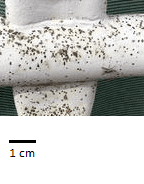
Fly droppings, minuscule and easily missed, are typically round or slightly irregular in shape. Measuring less than 1 millimeter, these tiny specks often go unnoticed unless accumulated in significant numbers. The texture is usually moist upon deposition but dries out rapidly, becoming crusty. Colors range from dark brown to black, depending on the fly species and their food sources. Although fly droppings themselves pose minimal risk, the presence of flies and their droppings may indicate unsanitary conditions and potential disease transmission.
Speak with a pest specialist? Call 1300 119 085 or Click Here
Rabbit Droppings

Rabbit droppings, easily recognizable, take on a spherical shape, akin to small, firm pellets. Measuring roughly 0.8 to 1.2 centimeters in diameter, their uniform size and shape set them apart. The texture is dry and fibrous due to their herbivorous diet, consisting primarily of plant material. Fresh droppings showcase a dark brown to black color, gradually lightening to a faded, grayish-brown as they age. While rabbit droppings pose minimal health risks, practice proper hygiene when handling them, particularly in gardening or farming contexts.
Snail Dropping
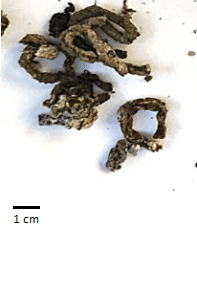
Snail Droppings are tiny, elongated, and coiled. Ssnail droppings typically measure around 0.2 to 2 cm depending on the species. Usually slimy and mushy when first formed, the texture eventually dries to a more crumbly, solid form. Reflecting the snails’ plant-based diet, snail excretions range in colour from green to dark brown to black. Snail poop is harmless, but it can indicate the presence of snails, which could be damaging to plants in glasshouses and gardens.
Pantry Month Droppings

Frass, another name for the tiny, oval-shaped pellets left behind by pantry moths, is usually less than a millimetre long. Depending on the moth species and their food, these droppings can range in colour from light brown to dark brown or even black.. The texture is often dry and sandy, resembling grains of sand or fine sawdust. These droppings are commonly found near stored food products or in the corners of cabinets and pantries. While the droppings themselves are not harmful, they can be an indicator of a pantry moth infestation, which can lead to the contamination and spoilage of food items.
OUR SYDNEY CUSTOMER FEEDBACK
WE ARE HERE MON-SAT 8AM TO 5PM, CALL US NOW
Pest Control Sydney offers effective treatment for rodents, spiders, and termites in homes and other commercial properties and residential properties and properties. Book a free pest inspection call with our licensed experts.
